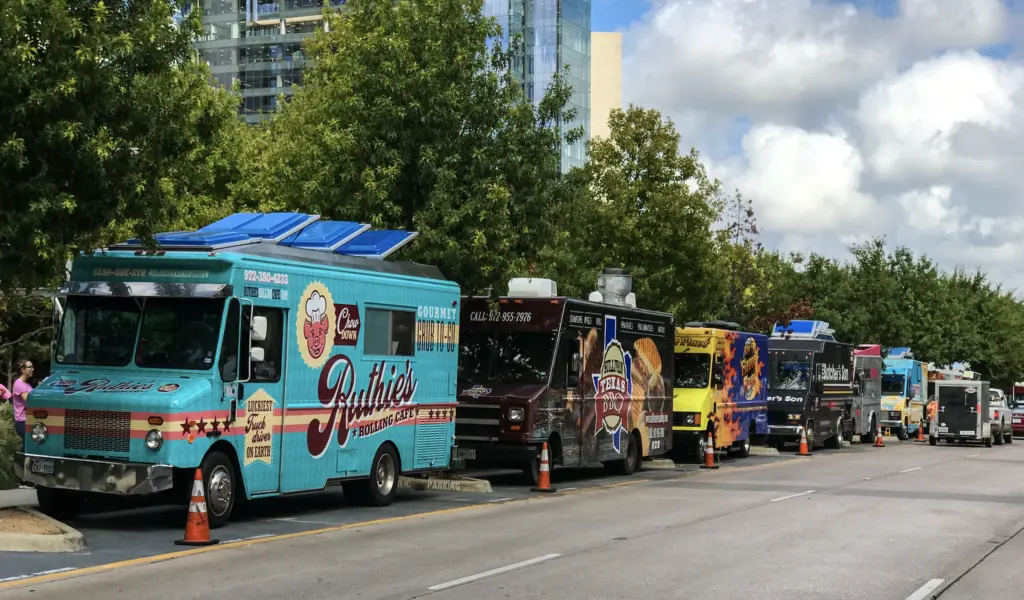Food
The Ultimate Guide for Powering the Food Truck

If you want to bring your own creative recipe to the streets, the food truck business is the most popular option. Setting up the food truck is a relatively reasonable and easily achievable idea, but it needs some actionable plans.
You have to ask yourself the following questions for starting your food truck business.
- What will be the water supply source?
- What cooking essentials do I need?
- What will be the power source to run the kitchen accessories?
- What will be the workspace?
Deciding the appropriate power source for the food truck is essential because it maintains your business flow. Hindrance in power supply means a delay in orders.
To make your business successful, we make comprehensive guidelines to power your food truck. Read this article to decide which power source is best for you.
Food truck power sources
Portable diesel or gas generator
A portable diesel or gas generator is a machine that converts diesel or gasoline into electrical power. It can be easily moved from one location to another.
Portable generators are often used as a power source for food trucks because they can provide a reliable source of electricity without requiring a fixed power source or installation.
Portable generators come in a variety of sizes and power outputs, so you’ll need to choose one that can provide enough power for your specific needs.
When selecting a generator for food trucks, consider the power requirements of all the equipment you’ll be using, including appliances, lighting, and any other electrical devices.
If you have a large food truck that needs a high-power source, you can buy a 5000 W portable generator. Its minimal power counterpart is also available and gives the power of up to 1000 W, enough to run a small food truck.
Pros of portable generator
- A portable generator for your food truck allows you to operate in locations that don’t have access to electricity.
- Another advantage is that portable generators are relatively easy to set up and use and can be moved around as needed.
- A portable inverter generator is quiet and power efficient.
Cons of portable generator
- They emit exhaust fumes, which can be unpleasant or even hazardous if not properly vented.
- You’ll need to have a supply of fuel on hand, which can be an added expense and inconvenience.
What is a solar panel? How does it work?
A solar panel uses photovoltaic (PV) cells to convert sunlight into electrical power. The PV cells contain layers of silicon and other materials that create an electric field when exposed to sunlight.
When light strikes the PV cells, it excites the electrons in the silicon, causing them to flow and create an electric current.
For a food truck, solar panels can be used to generate electricity to power the appliances and equipment on board. The solar panels are mounted on the roof of the food truck, where they can capture sunlight during the day.
The electricity generated by the solar panels is stored in batteries, which can be used to power the food truck when the sun isn’t shining or during periods of high demand.
The size and number of solar panels needed to power a food truck depend on the electricity requirement and the available space on the truck roof.
Pros of solar panels
- solar panels for your food truck are environmentally friendly and produce no emissions or noise pollution.
- They are also low maintenance and have a long lifespan, making them a cost-effective option in the long run.
Cons
The amount of electricity generated by solar panels depends on the amount of sunlight they receive, which can be reduced on cloudy or overcast days.
You should have a backup power source in case of low sunlight or high electricity demand.
Liquified petroleum gas for powering food trucks
Liquefied Petroleum Gas (LPG), also known as propane, is a popular alternative fuel source for food trucks. LPG is a clean-burning fuel. It is used to power a variety of appliances and equipment, including stoves, ovens, grills, and refrigerators.
You should have a propane tank mounted outside the food truck to use LPG for your food truck. The tank is connected to the appliances and equipment using hoses and regulators, which control the pressure and flow of the gas.
Pros of LPG
- LPG is a relatively affordable fuel source. It can be easily refilled or exchanged at gas stations or other locations.
- LPG is also a clean-burning fuel that produces fewer emissions than gasoline or diesel, making it an environmentally friendly choice.
Cons
- You’ll need to be careful to properly store and handle the propane tanks to prevent leaks or other safety hazards.
In addition to these power sources and equipment, you may also want to consider backup power sources, such as a second battery or a portable generator. The alternative power source will ensure you don’t lose power during an event or while driving.
Related CTN News:
Chang Beer: Exploring The Refreshing Taste Of Thailand
Healthy Recipes For Weight Loss: Benefits & Full Day Meal Plan
3 Food Stocks Bargain Hunters Should Buy Right Now






























